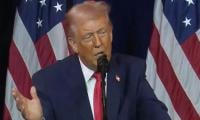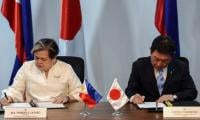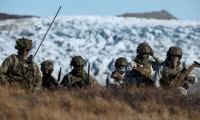The anti-China coalition
US, India and Japan commenced the grand display of the maritime war game, Malabar, a stone’s throw away from the sensitive South China Sea. This exercise was designed to convey a very strong message to China: that the new coalition of Asia’s Democratic Security Diamond envisaged by Shinzo Abe is becoming a reality.
Malabar was timed to coincide with Indian PM Modi’s recent visit to Washington. And some parts of the Indian media even openly named China as the future enemy of the democratic world.
Australia was the only country physically not participating in this exercise (Shinzo Abe’s Asia’s Democratic Security Diamond has four corners: US, Japan, India and Australia). This puzzle is solved by analysing past Indo-Australian collaboration and the fact that Australia did participate in the earlier Malabar Exercises either.
Last year in mid-September, Australia and India held their first-ever bilateral naval exercise, AUSINDEX-2015. This was held in the Bay of Bengal with enhanced focus on anti-submarine warfare. Not merely a combined exercise, it had far-reaching import, and highlighted Australia’s national-strategic reorientation in recent years.
Australian strategic approach to the Asia-Pacific region is summarised by Dr Gurpreet S Khurana in a blog for the Centre for International Maritime Security (CIMSEC): “it is instructive to note that Australia’s 2013 National Security Strategy calls China ‘our key economic partner’, whereas it calls India ‘our Strategic Partner’. The essence is that as Australia develops its economic ties with China, it needs India and other regional powers as a hedge against possible scenarios involving China that could be inimical to its national security interests. Ostensibly, the need to build strategic deterrence against China is a major driver for Australia’s keenness to join the Malabar-2015 naval exercise involving India, Japan and the US.”
India is fielding its best available maritime assets – like Indian-made stealth frigates INS Sahyadri, INS Satpura, Indian fleet tanker INS Shakti and INS Kirch. Indian marine commandos and an anti-submarine warfare aircraft is also arrayed to convey the message to China that India will go all out to support the US’s ‘Asian pivot’.
While India falls in with the US, Russia has started to feel the heat of the new alignment. What then are the emerging scenarios?
China and Russia are being strategically suffocated on three major fronts. In the Asia Pacific region, the US’s ‘Asia pivot’ is coming of age. The West is propagating the doomsday scenario of an assertive China bullying the South China Sea periphery through military might. Whereas the active members of the Asian pivot like India, Japan, Australia and US will showcase the kinetic arm of this strategy, the neutral and passive states lying in the region will be persuaded to provide diplomatic, informational and logistic support. This could have far reaching consequences for both China and Russia.
In West Asia and Africa, the Chinese dream of ‘One Belt One Road’ and initiatives like the CPEC will be seriously contested through a new alignment of countries like India, Iran and Afghanistan, with tacit support from Uncle Sam. Since Pakistan is an active player in this game, it will be brought under tremendous pressure. In the better part of the Middle East and North Africa, the instability of states – through engineered chaos courtesy Uncle Sam – stakeholders have started to understand the game being played in the name of Arab Spring and democracy. Even Turkey has started to feel the heat and is looking for alternatives to counter the chaos generated by Western powers.
On the BRICS front, the active involvement of India against China and Russia has put a question mark on the future of this politico-economic alliance, and BRICS may have to shed the ‘I’ as India takes a clear side against the spirit of this colossus.
While Uncle Sam prods Asian, Latin American and African nations into new coalitions against imaginary threats, the non-Western world needs to realise that the global chaos supported by the US has no winners; if in doubt, ask the Libyans, Syrians and Iraqis. China and Russia should take the initiative by reaching out to countries like Pakistan to build up a Global Colossus for Peace (GCP).
To begin with, the core of this alliance for peace could include China, Russian Federation, Pakistan, Turkey, KSA, Brazil, South Africa and Egypt. Based on the principals of equality, economic empowerment and peace, this coalition f should set out an agenda for sustainable development and security.
It is high time non-Western states realised the spectre of the new cold war being thrust upon the entire world through machinations of warmongers.
The writers are Lahore-based freelance columnists.
Email: waqarkauravi@gmail.com
-
 Bruno Mars Leaves Taylor Swift Behind With Shocking Move
Bruno Mars Leaves Taylor Swift Behind With Shocking Move -
 Trump Administration Imposes 25% Tariff On Imports Of Some AI Chips
Trump Administration Imposes 25% Tariff On Imports Of Some AI Chips -
 Chinese Smartphone Makers Adjust Prices As Costs Go Up
Chinese Smartphone Makers Adjust Prices As Costs Go Up -
 Wikipedia Owner Signs AI Content Training Deals With Microsoft, Meta
Wikipedia Owner Signs AI Content Training Deals With Microsoft, Meta -
 Meghan Markle’s Real Feelings Revealed Amid UK Return Rumours
Meghan Markle’s Real Feelings Revealed Amid UK Return Rumours -
 Reese Witherspoon Issues Urgent Warning After Scammers Using Her Identity
Reese Witherspoon Issues Urgent Warning After Scammers Using Her Identity -
 XAI Restricts Grok Image Editing After Backlash From California And Europe
XAI Restricts Grok Image Editing After Backlash From California And Europe -
 ‘Disgraced’ Andrew’s Past Scandals Catch Up To His Daughters
‘Disgraced’ Andrew’s Past Scandals Catch Up To His Daughters -
 Amazon Rolls Out ‘sovereign’ EU-based Cloud To Address Data Privacy Concerns
Amazon Rolls Out ‘sovereign’ EU-based Cloud To Address Data Privacy Concerns -
 Ross, Matt Duffer Used AI To Write Finale Of 'Stranger Things'?
Ross, Matt Duffer Used AI To Write Finale Of 'Stranger Things'? -
 Microsoft Secures Largest Ever Soil Carbon Credit Agreement Amid Data Centres Expansion
Microsoft Secures Largest Ever Soil Carbon Credit Agreement Amid Data Centres Expansion -
 Google Expands Gemini With Personal Intelligence
Google Expands Gemini With Personal Intelligence -
 Japan, Philippines Sign Defence Pacts As Regional Tensions Escalate
Japan, Philippines Sign Defence Pacts As Regional Tensions Escalate -
 ISS Crew Of Four Completes Medical Evacuation With Safe Splashdown Off California
ISS Crew Of Four Completes Medical Evacuation With Safe Splashdown Off California -
 Connor Storrie Reveals Why His Dad Hasn't Seen 'Heated Rivalry' Yet
Connor Storrie Reveals Why His Dad Hasn't Seen 'Heated Rivalry' Yet -
 Meghan Markle’s Biggest Challenge In UK Return As She Struggles To Control Narrative
Meghan Markle’s Biggest Challenge In UK Return As She Struggles To Control Narrative



